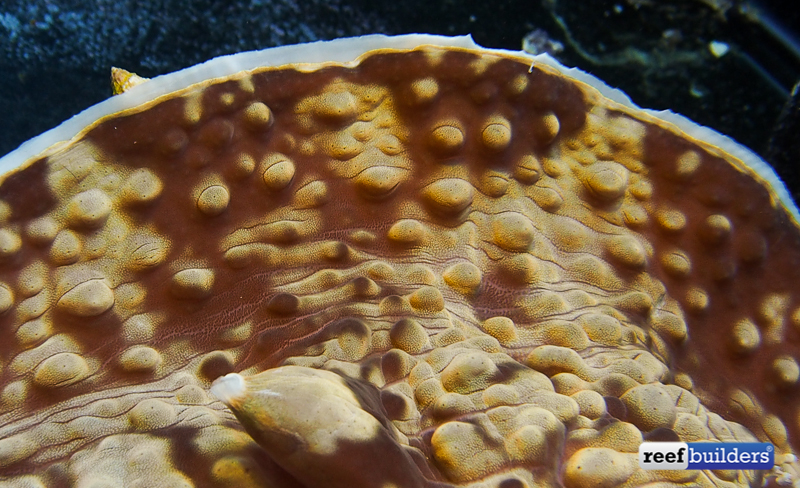We’ve been writing about the devil clam, Tridacna mbalavuana (formerly T. tevoroa) for years, and even more so in the last couple months since Tonga loosened up its exports of giant clams. But finally, this week we had the chance to see a real live devil clam, in person, in the flesh, and extremely personal.

Coming face to face with this mythical beast is an experience we’ll never forget as this clam is unlike no other species of giant clam. This species comes only from Tonga, it lives in deeper, darker water and the rules of captive clam keeping are simply not the same for Tridacna mbalavuana as they are for other species of clams.

The first thing you’ll notice about the devil clam is that its mantle is not nearly as patterned or adorned as the other species of Tridacna, it seems a lot more like a Hippopus species in that regard and like the species in that genus it also has a mantle that only extends to the edge of the shell, not past it like its congeners in the genus Tridacna.

The shell is also quite different, being most similar to the closely related Tridacna derasa, with a smooth surface completely devoid of any scales or scutes. The shell is also somewhat asymmetrical with an odd elongation on the excurrent siphon side of the bivalve. Also of note is the weird monster-like tentacles on the incurrent siphon which are more pronounced, much more pronounced, than on any other species of Tridacnid, and it definitely helps to support the Devil Clam moniker.

The one thing that images can’t even begin to convey is the gnarly, bumpy surface of the clam which glows a weird kind of iridescent orange and gold ! Under regular old blue lights the clam looks dark and grey but just a touch of warm lighting makes the iridescence really pop, and turns this monster bivalve into a beautiful creature.
! Under regular old blue lights the clam looks dark and grey but just a touch of warm lighting makes the iridescence really pop, and turns this monster bivalve into a beautiful creature.

This devil clam was acquired by Unique Corals from Pacific Aqua Farms just this week and it took a matter of a couple of hours for this clam to settle into its new home. The current environment is a dream tank for a devil clam, under a bank of mostly blue T5 tubes, moderate flow, no other fish or corals, and 500 gallons of water volume all to itself – because this clam is just that special.





